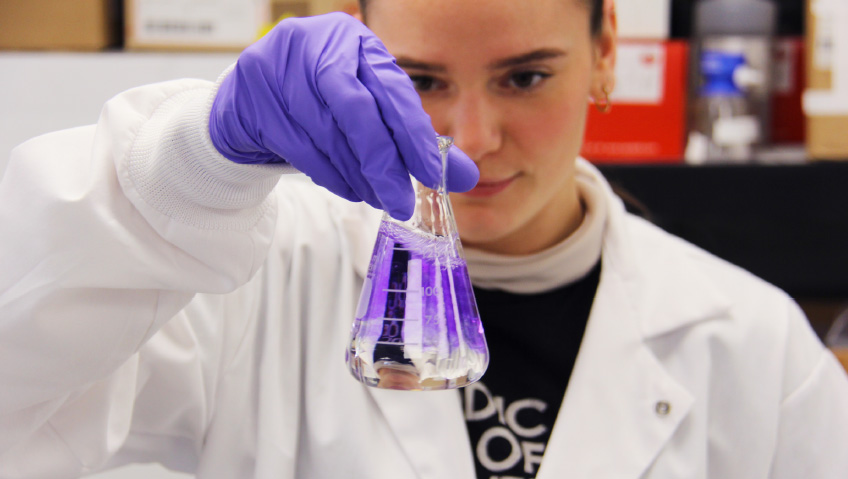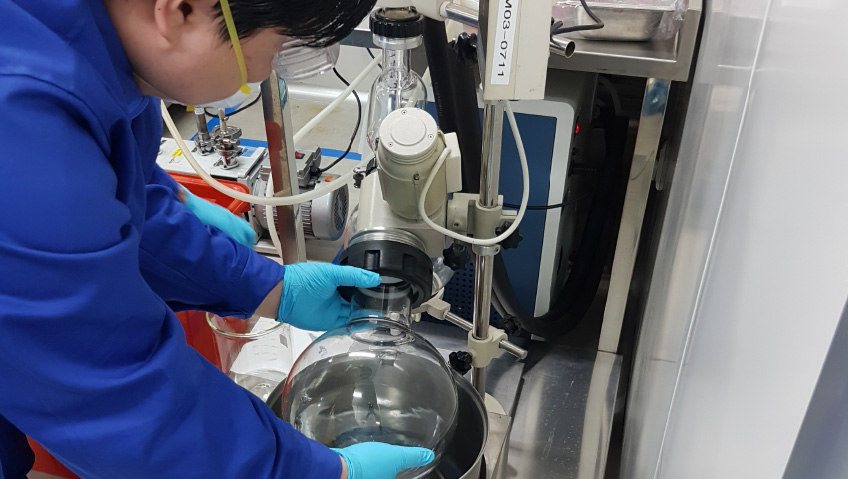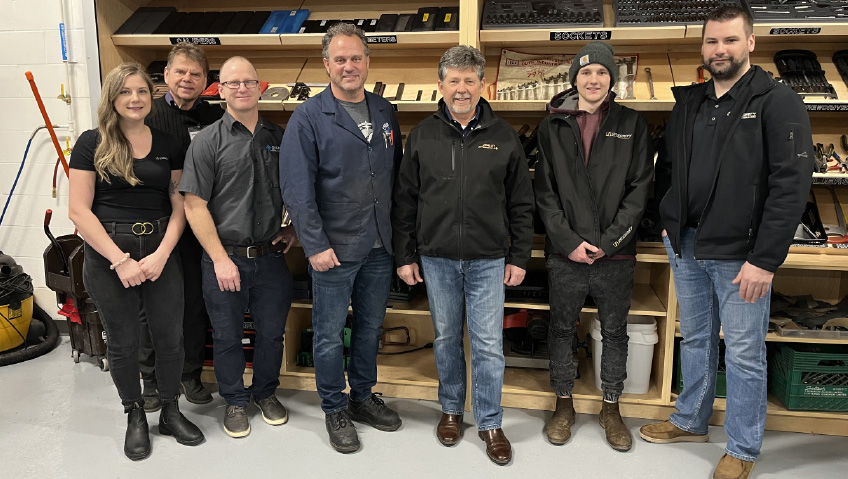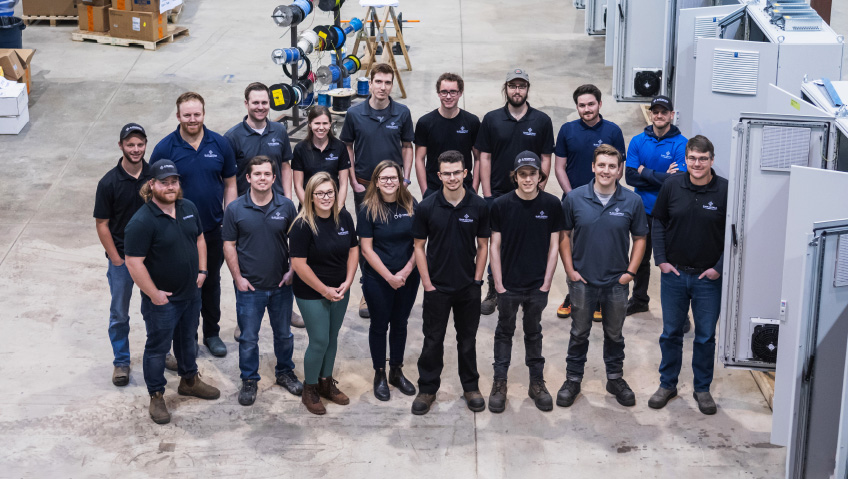StressMarq Biosciences Inc. is a boutique firm that develops high-quality bioreagents for pharmaceutical companies and scientific research organizations around the world. Putting these tools in the hands of the right partners has enabled some ground-breaking discoveries…
StressMarq Biosciences’ tools include antibodies and fibrilized proteins that improve the speed, ease, and consistency of scientific research that has led to the discovery of new information about neurodegenerative diseases, their progression, and treatment options for improved patient outcomes.
When President and CEO Ariel Louwrier founded StressMarq, after time spent at a public drug discovery company, he had two goals: to go his own way and achieve autonomy; and to advance the resources available for the treatment of illness, as he, personally, had experienced the toll that neurodegenerative disease took on individuals, their families, and the healthcare system.
Success under stress
Louwrier chose a volatile economic period to found StressMarq Biosciences. The global financial crisis of 2007-2008 and the U.S.-Canadian currency value reversal that followed might have been the worst possible time to launch an export-based operation. However, the company weathered the storm through the relationships that Louwrier had established over the years and the high standard of products and support it provided.
“We survived all that and managed to grow, and it was really a question of two things: we were providing quality products; and, because we’re an unregulated industry, it’s a question of trust with whomever you’re selling to,” says Louwrier. “If that trust isn’t backed up with something then you have a problem.”
Trust is the foundation of StressMarq’s relationships with its distributors and end users. As Louwrier confirms, “They knew the technical side would be supported and the products would work. That allowed us to get the products into the hands of companies that had confidence in us.”
This isn’t without its challenges, either. As Louwrier says, “We work really hard to get things to work in an area where there are still a lot of unknowns; we then have to provide that knowledge in a usable form to the wider scientific world because they have to be convinced that it’s useful.”
Tools for change
Initially an antibody company, StressMarq pivoted in 2016 to also produce fibrilized proteins, primarily of interest to researchers studying neurodegenerative diseases, a market that was less saturated due to the more technical, drug discovery-driven nature of the work that was taking place.
According to Louwrier, “We made antibodies and that was a very competitive space, quite cutthroat in many ways. What we did, starting in 2016, was to move a bit sideways and identify a niche in the neurodegenerative disease area that we could exploit. It’s more difficult to do than antibody work, so there are also fewer players and less competition.”
The decision was made almost overnight. StressMarq quickly moved to assert itself in that market, confident that it could have a substantive impact, not least because of its small size and savvy leadership team.
“In a field that requires lots of help and input, the faster you can do these things the better. So that’s where we ended up because no one else in the world was doing it. We became the first, and first is always good as long as you can exploit that and, of course, let people know what you’re doing. We did that and we’re now the primary company,” says Louwrier.
For fifteen years, StressMarq has worked hard to lessen the load on its distribution partners and the end users of its products by ensuring effective knowledge transfer and support, building confidence throughout the entirety of its supply chain.
Good work out there
Despite this success, Louwrier remains humble, shining a light on the good work happening in the scientific space. “There are a lot of people doing some very interesting things with our materials, and without our materials, too, but we’re enabling people to do things faster and more consistently.”
One of those organizations is the Michael J. Fox Foundation, which recently published the results of a landmark trial able to detect Parkinson’s disease by using an aggregation assay. StressMarq is working on developing the reagents to carry out this assay on a commercial scale.
As Louwrier explains, “We’re trying to create those building blocks, the brick and mortar for that assay, that on the one hand really slows down these actions that allow proteins to self-aggregate, while at the same time—if there’s something in there from the sample from the patient that would actually get this going—to accelerate that as fast as possible so we can measure it in a certain amount of time.”
Referred to as a “game changer,” the organization’s Parkinson’s Progression Markers Initiative (PPMI) has discovered a biomarker for Parkinson’s disease that could lead to new diagnostics and eventually treatments, meaning there is some element of confidence that Parkinson’s disease can be diagnosed prior to a person becoming symptomatic.
“That was termed a breakthrough because the study was done on a large scale on a very well-defined population that had been generated by the Michael J. Fox Foundation,” Louwrier says. This population was followed for a long time, enabling potential disease progression to be identified and measured, as well as obtaining biological samples including blood, urine, cerebral spinal fluid, and nucleic acid preparations.
Speeding up discovery
Neurodegeneration occurs when plaques, caused by self-catalyzing proteins that deviate from standard behaviour, build up in the brain. As Louwrier explains, “They just take more of the benevolent version of themselves and make it into a version that kills cells. What scientists do is replicate that artificially to create a model that drug discovery work is carried out on.”
These models enable drug discovery work to be completed in a much shorter time. Whereas it would take between six and 18 months to generate the model using genetic techniques, the StressMarq model can be generated in as few as 30 days. An expedited response time could facilitate more rapid diagnoses and proactive, rather than reactive treatment options, which could improve patient outcomes while reducing the systemic burden associated with these diseases.
Louwrier notes, “The brain can suffer a lot of neuronal loss in these diseases, up to fifty to sixty percent, and with that kind of cell death, you’re now talking about a rear-guard action: how do we keep this from getting worse? At that point, you already have a major problem on your hands.”
What’s next?
If the assay published by the PPMI works for Parkinson’s as a diagnostic, there is no telling what other neurodegenerative diseases could also be addressed using the same approach. While Louwrier knows that not all drugs that are deemed a success receive federal approval, it is important work that is being done at a time when it is needed the most.
“The emphasis on neurodegenerative disease is probably at its zenith right now, as far as the last thirty to forty years is concerned,” Louwrier says. There’s great opportunity to take advantage of the opportunity that StressMarq is poised to capitalize on.
He adds, “Something we develop today and launch tomorrow may well have a ten- to twenty-year lifespan, so we’re already doing things for the future even if we stop dead right now. But our mission is to make the next generation tools for the sector; we’re not engaged in doing the research that’s resulting in a drug. We’re essentially enabling things in the realm of drug discovery to happen faster and more consistently.”






